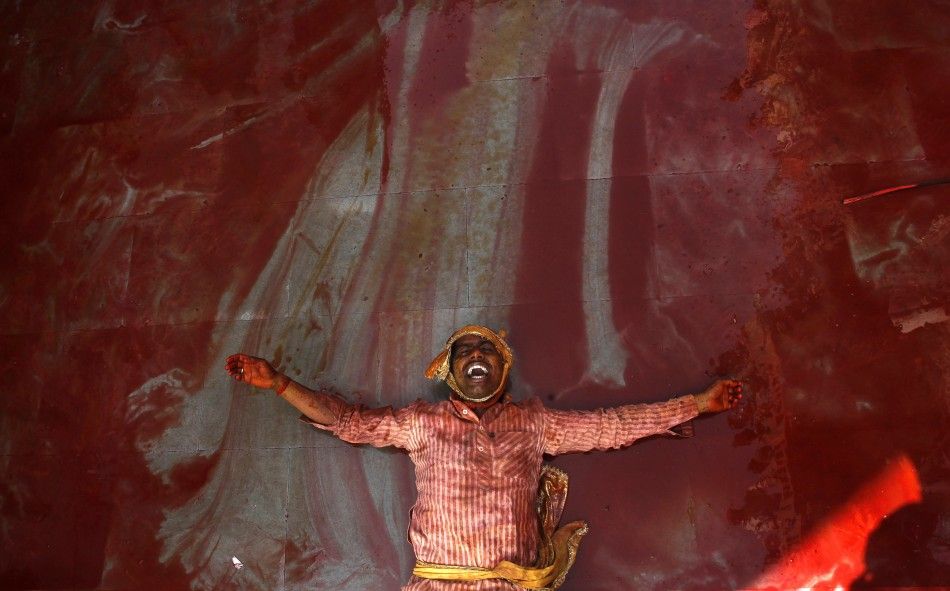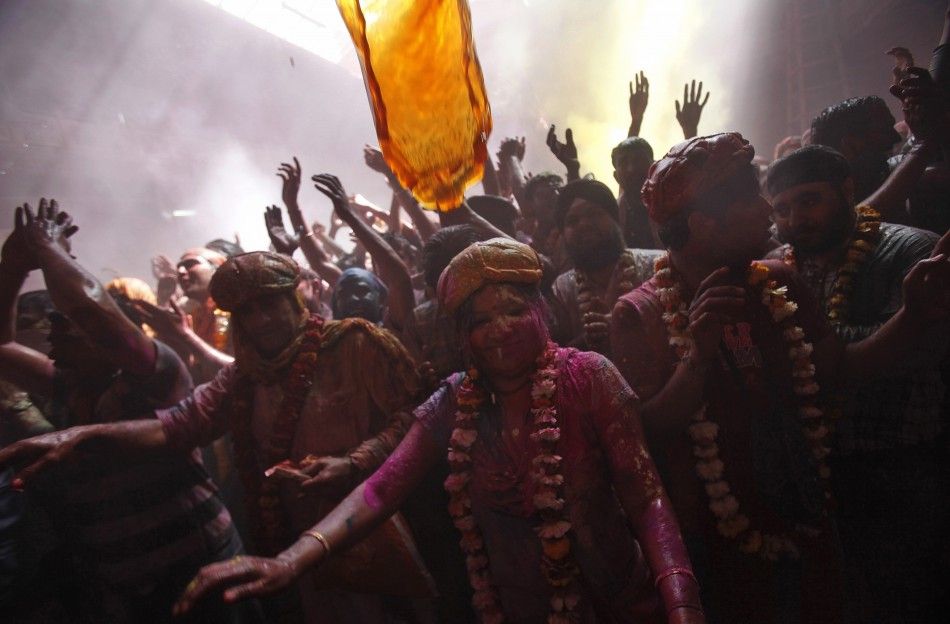Holi 2012: India’s Festival of Colors Begins [PHOTOS]
Though Holi 2012 doesn't officially start until Thursday, in Lord Krishna's land -- Vrindavan, Barsana, and Mathura -- celebrations started nearly a week in advance.
Air in these villages was thick with clouds of color - a telltale sign that Holi had arrived.
Krishna devotees from across India descended on Vrindavan to take part in the flamboyant celebrations on Wednesday. Thousands congregated for aarti, gathering around the idol and joining priests in singing bhajan devotional songs.
In Hindu mythology, it's said that the darker-skinned Krishna was jealous of the fair-skinned Radha and pestered his foster mother Yashodha about it so much that she told him he could change Radha's skin by sprinkling her with colors.
Thus each spring, Holi revelers hurl neon powder (gulal) and colored water into the air, tie-dying participants into spirographs of color. The colors are said to represent energy, life, joy, and the coming of spring.
The streets of the nation's capital, New Delhi, are already drenched in color with roadside stalls selling gulal, pichkaris (water guns), and other colorful accessories. Though synthetic powders have been popular for decades, a recent push for herbal and organic colors made from extracts of flowers, tree bark, and leaves, have become increasingly popular.
Holi is celebrated with great fervor in northern India, though it is included in greater Shigmo celebrations in the south.
On the eve of Holi, celebrants light massive bonfires to ward off evil spirits and commemorate the victory of good over evil. On the day of the main event, men typically wear white kurtas while ladies don white saris or salwar khameez. Of course these clothes don't stay white for long. Children have free range to smear colors on friends and neighbors while the adults toss dyed water and gulal in a riot of color.
Have a look at some of the early celebrations below:







© Copyright IBTimes 2025. All rights reserved.






















